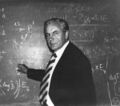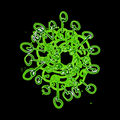Template:Selected anniversaries/July 3: Difference between revisions
No edit summary |
No edit summary |
||
| Line 3: | Line 3: | ||
File:Li Shizhen.jpg|link=Li Shizhen (nonfiction)|1518: Physician and scientist [[Li Shizhen (nonfiction)|Li Shizhen]] born. He will develop many innovative methods for the proper classification of herb components and medications to be used for treating diseases, earning a reputation as the greatest scientific naturalist of China. | File:Li Shizhen.jpg|link=Li Shizhen (nonfiction)|1518: Physician and scientist [[Li Shizhen (nonfiction)|Li Shizhen]] born. He will develop many innovative methods for the proper classification of herb components and medications to be used for treating diseases, earning a reputation as the greatest scientific naturalist of China. | ||
||1749: William Jones dies ... mathematician and academic. No DOB. Pic. | |||
||1749: William Jones dies ... mathematician and academic. | |||
File:Jean-Jacques Rousseau.jpg|link=Jean-Jacques Rousseau (nonfiction)|1777: Philosopher and author [[Jean-Jacques Rousseau (nonfiction)|Jean-Jacques Rousseau]] warns that "the Enlightenment itself, built as it is on the certainties of mathematics and logic, now stands in peril from the generation of [[math criminals]] now coming of age." | File:Jean-Jacques Rousseau.jpg|link=Jean-Jacques Rousseau (nonfiction)|1777: Philosopher and author [[Jean-Jacques Rousseau (nonfiction)|Jean-Jacques Rousseau]] warns that "the Enlightenment itself, built as it is on the certainties of mathematics and logic, now stands in peril from the generation of [[math criminals]] now coming of age." | ||
| Line 11: | Line 9: | ||
||1782: Pierre Berthier born ... mineralogist and mining engineer who discovered bauxite (aluminium ore) on 23 Mar 1821 near the village Les Baux de Provence in southern France. On 24 May 1806, he joined the central laboratory at the Board of Mines. From 1816, he was chief of the laboratory at the École des Mines, and professor of assaying. Berthier analyzed kaolin along with dozens of other minerals and ores. He sought out phosphate deposits valuable for agriculture. He published a treatise (1834) of practical analytical procedures that were widely used by other mineralogists. In another field, Berthier noticed - before Mitscherlich - that isomorphism occurred whereby chemically different substances can have the same crystalline form and even co-crystallize. Pic. | ||1782: Pierre Berthier born ... mineralogist and mining engineer who discovered bauxite (aluminium ore) on 23 Mar 1821 near the village Les Baux de Provence in southern France. On 24 May 1806, he joined the central laboratory at the Board of Mines. From 1816, he was chief of the laboratory at the École des Mines, and professor of assaying. Berthier analyzed kaolin along with dozens of other minerals and ores. He sought out phosphate deposits valuable for agriculture. He published a treatise (1834) of practical analytical procedures that were widely used by other mineralogists. In another field, Berthier noticed - before Mitscherlich - that isomorphism occurred whereby chemically different substances can have the same crystalline form and even co-crystallize. Pic. | ||
||1790: Jean-Baptiste L. Romé de l'Isle | ||1790: Jean-Baptiste L. Romé de l'Isle dies ... geologist and mineralogist. Pic: statue. | ||
||1817: Valentine Seaman dies ... was an American physician who introduced the smallpox vaccine to the United States and mapped yellow fever in New York City. His contributions to public health also include women's education in nursing and midwifery. Pic not Wikipedia. | ||1817: Valentine Seaman dies ... was an American physician who introduced the smallpox vaccine to the United States and mapped yellow fever in New York City. His contributions to public health also include women's education in nursing and midwifery. Pic not Wikipedia. | ||
| Line 17: | Line 15: | ||
||1819: The Bank of Savings in New York City, the first savings bank in the United States, opens. | ||1819: The Bank of Savings in New York City, the first savings bank in the United States, opens. | ||
||1842: Otto Stolz born ... mathematician noted for his work on mathematical analysis and infinitesimals. | ||1842: Otto Stolz born ... mathematician noted for his work on mathematical analysis and infinitesimals. Pic. | ||
||1866: Henry Frederick Baker born ... mathematician, working mainly in algebraic geometry, but also remembered for contributions to partial differential equations (related to what would become known as solitons), and Lie groups. Pic. | ||1866: Henry Frederick Baker born ... mathematician, working mainly in algebraic geometry, but also remembered for contributions to partial differential equations (related to what would become known as solitons), and Lie groups. Pic. | ||
||1879: Alfred Korzybski born ... mathematician, linguist, and philosopher. | ||1879: Alfred Korzybski born ... mathematician, linguist, and philosopher. Pic. | ||
File:Hasan Tahsini.jpg|link=Hasan Tahsini (nonfiction)|1881: Astronomer, mathematician, and philosopher [[Hasan Tahsini (nonfiction)|Hasan Tahsini]] dies. He was one of the most prominent scholars of the Ottoman Empire of the 19th century. | File:Hasan Tahsini.jpg|link=Hasan Tahsini (nonfiction)|1881: Astronomer, mathematician, and philosopher [[Hasan Tahsini (nonfiction)|Hasan Tahsini]] dies. He was one of the most prominent scholars of the Ottoman Empire of the 19th century. | ||
Revision as of 10:30, 20 March 2019
1518: Physician and scientist Li Shizhen born. He will develop many innovative methods for the proper classification of herb components and medications to be used for treating diseases, earning a reputation as the greatest scientific naturalist of China.
1777: Philosopher and author Jean-Jacques Rousseau warns that "the Enlightenment itself, built as it is on the certainties of mathematics and logic, now stands in peril from the generation of math criminals now coming of age."
1881: Astronomer, mathematician, and philosopher Hasan Tahsini dies. He was one of the most prominent scholars of the Ottoman Empire of the 19th century.
1968: Film director and arms dealer Egon Rhodomunde raises money for new film by shelling shares in the upcoming N1 rocket explosion.
1969: The biggest explosion in the history of rocketry occurs when the Soviet N1 rocket explodes and subsequently destroys its launchpad.
1970: Mathematician, dissident, and crime-fighter Igor Shafarevich publishes new class of Gnomon algorithm functions which detect and prevent crimes against mathematical constants.
2007: NASA approves a mission extension for Stardust, sending the spacecraft to comet Tempel 1.
2016: Chromatographic analysis of Green Tangle unexpectedly reveals "at least five, perhaps as many as ten" previously unknown shades of green.







